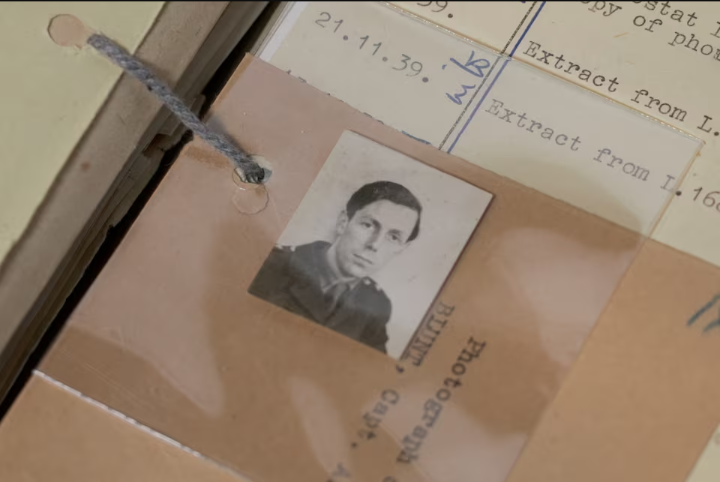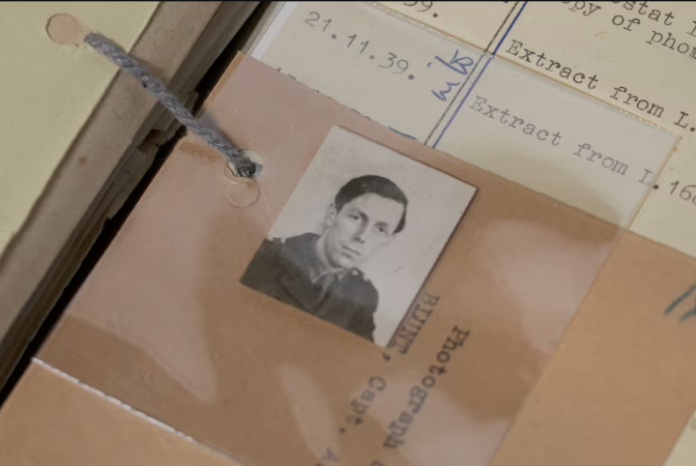For decades, the Cambridge Five—a notorious ring of British double agents who spied for the Soviet Union—have been the subject of intrigue, conspiracy theories, and spy novels.
Now, newly declassified MI5 files have unveiled firsthand confessions from three of the group’s most infamous members: Kim Philby, Anthony Blunt, and John Cairncross.
Released by the UK National Archives, these top-secret documents shed light on how these men infiltrated Britain’s intelligence agencies and betrayed their country.
The Cambridge Five: Britain’s Most Infamous Spies
The Cambridge Five—Philby, Blunt, Guy Burgess, Donald Maclean, and John Cairncross—were recruited as Soviet spies while studying at Cambridge University in the 1930s. They secretly passed classified intelligence to Moscow for decades, with some continuing their espionage activities into the 1950s.
Among the newly released documents is a six-page confession from Kim Philby, the group’s ringleader and a high-ranking officer in MI6 (Britain’s foreign intelligence service). Philby, who had long denied being a Soviet agent, finally admitted in 1963 that he had been recruited in 1934 by a man known as “Otto”, whom he later identified as an agent of the Soviet OGPU (predecessor to the KGB).
Philby’s Shocking Revelations
Philby, who operated under the codename “PEACH”, detailed how he recruited fellow spies Burgess and Maclean and later warned them in 1951 that British authorities were close to uncovering their true identities. This tip-off allowed them to flee to the Soviet Union, where they lived the rest of their lives in exile.
After his own confession, Philby defected to Moscow, where he was later honored by Russia’s foreign intelligence service. In 2010, a plaque commemorating his work as a Soviet spy was placed at the headquarters of Russia’s SVR (successor to the KGB).
Blunt’s Confession and Royal Connections
The files also include a 1964 MI5 interview transcript with Anthony Blunt, who confessed to spying in exchange for immunity from prosecution. At the time, Blunt was serving as Queen Elizabeth II’s official art adviser, a position he held until 1972. His past as a Soviet spy only became public in 1979, causing a major scandal for the British monarchy.
One of the most intriguing notes from the declassified documents states that in March 1973, Queen Elizabeth’s private secretary informed her about Blunt’s espionage. The note says: “She took it all very calmly and without surprise.”
The Last Spy Identified

John Cairncross, the final member of the Cambridge Five, wasn’t publicly exposed until the 1990s. However, in the newly released files, a 1964 telegram from Washington confirms that he admitted to spying from 1936 to 1951.
Inside the MI5 Archives
Some of these files will be showcased in a special exhibition, “MI5: Official Secrets,” at the National Archives. The display will feature spy case files, surveillance photographs, declassified papers, and even espionage equipment used by MI5 over its 115-year history.
MI5’s current director, Ken McCallum, emphasized the agency’s commitment to transparency: “While much of our work must remain secret, this exhibition reflects our ongoing commitment to being open wherever we can.”
Among the other declassified materials is a fascinating surveillance manual used by British intelligence officers from 1939 to 1951. It provides tips for spies, including this humorous but practical advice: “The use of facial disguise is not recommended. A false moustache or beard is easily detected, especially under the bright lights of a restaurant, pub, or subway train.”
These revelations provide a deeper understanding of one of the greatest espionage scandals in British history—proving that truth is often stranger than fiction.



